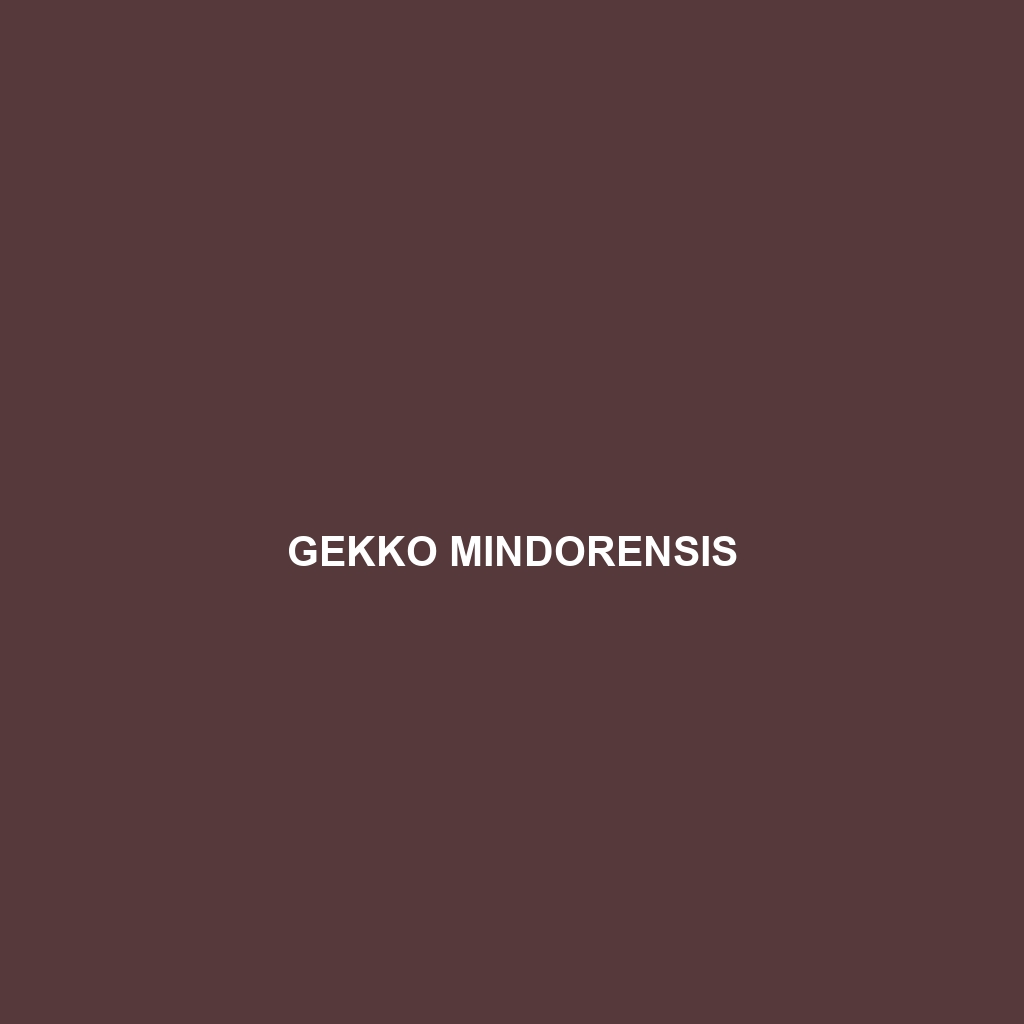Common Name
Gekko mindorensis
Scientific Name
Gekko mindorensis
Habitat
Gekko mindorensis primarily inhabits the lush rainforests of the Philippines, particularly on the island of Mindoro. This species thrives in warm, humid climates, often found in both lowland and montane regions. The preferred habitat includes areas with abundant trees, rocky outcrops, and dense vegetation that provide shelter and ample foraging opportunities. This gecko can also be spotted in disturbed areas near its natural rainforest habitat, showcasing remarkable adaptability to varying environmental conditions. The rich biodiversity of rainforests supports a complex ecosystem, making them a vital area for such unique species.
Physical Characteristics
Gekko mindorensis is medium-sized relative to its genus, typically measuring between 15 to 25 cm in length. Characterized by its distinctive coloration, this gecko displays a primary base color of pale gray or brown, complemented by darker bands that run across its body. These markings provide effective camouflage against the bark of trees and the forest floor. Notably, the species features large, bulbous eyes adapted for low-light conditions, defending against nocturnal predators. The toes are broad, equipped with adhesive pads that allow the gecko to navigate effortlessly across vertical surfaces and ceilings, a vital adaptation for its arboreal lifestyle.
Behavior
The behavior of Gekko mindorensis is predominantly nocturnal, emerging during the night to hunt and socialize. This gecko is known for its territorial nature, often engaging in vocalizations and physical displays to ward off intruders, particularly during the mating season. Mating rituals are fascinating; males perform elaborate courtship dances to attract females, using posturing and vocal calls. Their adaptability also includes the ability to remain camouflaged during the day, relying on their natural surroundings for protection against predators such as birds and snakes.
Diet
Gekko mindorensis is primarily an insectivore, feeding on a diet rich in insects such as crickets, moths, and beetles. Utilizing its keen eyesight and agile hunting skills, it actively stalks and ambushes prey in its environment. Occasionally, it may exhibit omnivorous tendencies, consuming plant matter or fruits when insects are scarce, although such instances are less common. The dietary habits of this species play a crucial part in the ecosystem, as they help regulate insect populations while providing a food source for larger predators.
Reproduction
The reproductive cycle of Gekko mindorensis typically aligns with the wet season in its habitat, which offers abundant resources for raising offspring. After a courtship period of vocalizations and display, females lay 1-2 eggs per clutch, often choosing sheltered locations such as leaf litter or crevices to provide protection. The gestation period lasts around 60 days before hatchlings emerge fully formed. Parental care is limited; however, females tend to remain nearby until the young geckos have acclimatized to their environment. This reproductive strategy ensures the survival of at least some offspring despite the challenges posed by predators.
Conservation Status
The Gekko mindorensis is currently classified as Vulnerable by the International Union for Conservation of Nature (IUCN). Destroyed habitats due to deforestation and human encroachment have significantly threatened its population. Ongoing conservation efforts focus on habitat restoration and preservation of the remaining rainforest areas on Mindoro Island. Additionally, raising awareness about this unique species encourages local communities to engage in protective measures, ensuring a sustainable future for the gecko and its ecosystem.
Interesting Facts
One fascinating aspect of Gekko mindorensis is its ability to regenerate its tail after losing it as a defensive mechanism against predators. This evolutionary trait not only aids in its survival but also fascinates researchers studying regenerative biology. Additionally, its unique vocalizations are essential for communication and signaling among individuals, displaying a level of social complexity that intrigues herpetologists.
Role in Ecosystem
Gekko mindorensis plays a crucial role in its ecosystem as both a predator and prey, contributing to population control of insects and serving as a food source for larger mammals and birds. Its presence indicates a healthy forest environment, and as an insectivore, it aids in maintaining ecological balance. By participating in the web of life within the rainforest, this gecko represents a keystone species, highlighting the interconnectedness of biodiversity in its habitat.
